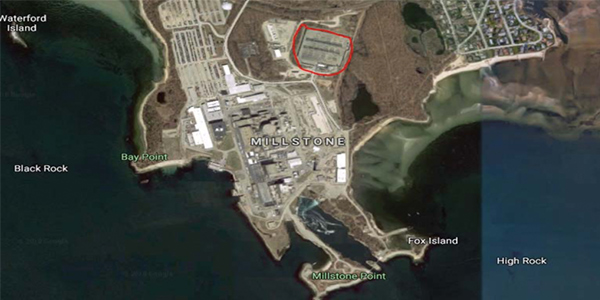reflects impact of existing state laws and regulations. | Eversource[/caption]
Integrating zero-emitting renewable resources such as wind and photovoltaics mostly decreases emissions, but increased use of fossil-fuel generating units that provide ancillary services like regulation, ramping and reserves could drive up emissions, water use and wastewater discharges, he said.
“We only have data going back to 2014” on water use, but the trend line is declining as coal and thermal generation goes off the system, Silva said.
New England CO2 emissions by fuel type and prime mover (short tons). | EversourceA recent Energy Information Administration report showed CO2 emissions up nationwide last year by 2.8%, mainly attributable to increased use of natural gas. But EIA projections for 2019 emissions in the power sector show CO2 emissions declining slightly, he said, while sulfur dioxide and nitrogen oxide emissions begin to flatline after precipitous drops over the past two decades.
“In New England in 2017, as boiler nitrogen oxide emissions declined dramatically, combined cycle units for the first time became the largest prime mover source of nitrogen oxide emissions on the system,” Silva said.
Millstone Substation Insulator Replacement
Eversource Energy wants to replace the Millstone 15G substation’s 345-kV yard insulating equipment with insulation having a high creepage distance in order to avoid salt contamination flashovers experienced during hurricanes in 1976, 1985 and 2012.
The substation is located in Waterford, Conn., near Dominion Energy’s 2,111-MW Millstone nuclear plant on Long Island Sound.
The Millstone substation, located on Long Island Sound | GoogleEversource engineer Greg Wilkosz told the PAC that Connecticut Light Power in the late 1980s “applied a hydrophobic coating, Sylgard, to the insulation system as a means of improving performance in the salt-contaminated environment to minimize the occurrence of flashover.”
Sylgard has a limited lifespan and has to be cleaned and reapplied every 10 to 20 years.
“Another factor in this project is that many of the insulators in the substation are between 40 to 50 years old, which falls within the range of typical equipment service life,” Wilkosz said.
Creepage distance is the distance along the insulator surface between the energized and grounded end fittings, and increasing that distance reduces the probability of sufficient contaminant accumulation and critical wetting that could lead to flashover.
Eversource recommends the replacement being more effective than reapplying Sylgard and estimates it could complete the nearly $11.5 million project by December 2023.]]>



